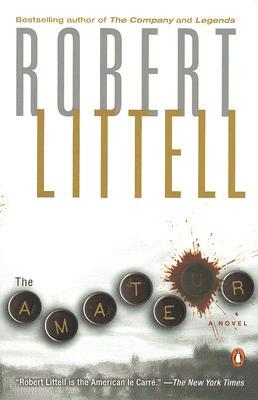 Charlie Heller, the protagonist of The Amateur, is a cryptographer for the CIA. He is a quiet man with top-secret clearance who spends his days happily mucking around with math and loving his fiance, Sarah. This all changes when Sarah is taken hostage in a terrorist attack and publicly executed. First, he grieves. Then, he seeks revenge.
Charlie Heller, the protagonist of The Amateur, is a cryptographer for the CIA. He is a quiet man with top-secret clearance who spends his days happily mucking around with math and loving his fiance, Sarah. This all changes when Sarah is taken hostage in a terrorist attack and publicly executed. First, he grieves. Then, he seeks revenge.
Heller’s not a field agent — he’s an egghead at a desk. The CIA will have to mount an operation to pursue, and Heller won’t be involved. Unfortunately, the CIA is not on board. The terrorists have retreated to Czechoslovakia. Legally, they can’t be touched. They’ll watch and wait, they tell Heller. Beyond that, their hands are tied.
Heller won’t take no for an answer. Because of his position as the the Company’s best cryptographer, he has access to hundreds — thousands — of the most sensitive communications ever to come through the CIA. He picks off a couple dozen of the worst of the worst and blackmails his employer. If they train him to go after the terrorists himself, he says, he’ll kill the terrorists who killed his fiance and deny that the CIA’s involved. If not, he’ll reveal the damaging messages to the public.
The CIA gives in to his blackmail and puts him through training. He prepares to go to Czechoslovakia in pursuit of the terrorists. But now that the plot is set in motion, it’s not just the terrorists who want him to fail. It’s the CIA, too.
This is an engaging, enjoyable read. The plot moves along at a sprightly clip and the not-very-surprising main developments get some color from unexpected details, like an art deco building shaped like a concrete nest and a subplot about analyzing Shakespeare for Baconian codes.

Fucking cryptography, how does it work?
Unfortunately, I have one major nitpick. The description of Heller’s cryptographic work is totally misguided. Littell repeatedly describes how Heller cracks coded CIA messages in loving pseudo-technical detail, yet seems to think that all codes are essentially substitution ciphers. Which, nope. This would not be a problem except that these sections are obviously intended to establish Heller as a brilliant genius and to give the book as a whole some authority as a realistic portrayal of tradecraft, so getting it this glaringly wrong is pretty … glaring.
Ignore those bits and you’ll have a fun read.
Read more from Aunt Ada Doom at Two Wrongs and a Write.
